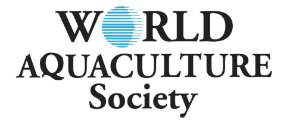Partitioned Pond Aquaculture Systems
World aquaculture is dominated by the use of simple earthen ponds. Unlike other common aquaculture systems, ponds provide many of the resources needed to grow aquatic animals in one self-contained unit. The main resource is phytoplankton that use solar energy to drive photosynthesis. Phytoplankton produce new organic matter, generate oxygen as a byproduct of photosynthesis, and assimilate carbon dioxide, ammonia, and other mineral nutrients from the water. Algal photosynthesis provides three essential resources for aquaculture production: 1) potential food for cultured animals, 2) oxygen to support life, and 3) treatment of wastes so that they do not accumulate to toxic levels.
Relying upon sunlight to drive photosynthesis to maintain water quality represents the lowest cost and most sustainable approach to fish or shrimp production, which explains the popularity of ponds as aquatic animal production systems. However, utilization of solar energy comes at a cost and with certain limitations. The capacity of ponds to treat wastes—and, therefore, the upper limit to aquaculture production—is ultimately limited by the finite energy available from sunlight and the relatively low photosynthetic efficiency of algae (only 1 to 2 percent of incident solar energy is converted to chemical energy stored in algal biomass). Aquaculture production per unit area in algal ponds is therefore significantly lower than that achievable in systems using energy subsidies (in the form of feed) from externally supplied fossil fuels.
Another consequence of low photosynthetic efficiency is that relatively large areas are needed for waste treatment relative to the water area (or volume) needed simply to confine the cultured animals (Sidebar). Aquatic animals moving freely within traditional aquaculture ponds are therefore distributed at much lower densities than in more intensively managed culture systems, leading to a number of management inefficiencies.
Aquaculturists have proposed or developed alternative outdoor culture systems that attempt to address the limitations and inefficiencies of traditional aquaculture ponds. In this article, we describe our personal involvement with the development of some of those alternatives. These systems have one design feature in common: the water body is physically divided into areas that allow better control of certain processes, such as confining fish, producing oxygen, treating wastes, or culturing secondary species. Because various ecosystem functions are physically separated, we call these systems "partitioned ponds."
Partitioned Catfish Ponds in Arkansas
Eugene L. Torrans
Pioneering catfish farmers used ponds of all sizes—from less than 0.5-ha to a giant 65-ha pond built by R.L. Thompson and W.F. Anderson in 1957—but most ponds ranged from 15 to 30 ha. Ponds were so large that the only way to harvest fish was to draw down the water level until fish became concentrated and were captured with a small seine. These early catfish ponds were difficult to manage but inexpensive to build.
In 1972, two Mississippi State University economists analyzed cost-size relationships for catfish ponds and pronounced 8-ha ponds to be the best compromise among construction and maintenance costs and management ease (Foster and Waldrop 1972). These ponds could be harvested by seining without water drawdown. The 8-ha pond became the standard pond size in Mississippi for the next 30 years.
Although the pond size recommended by Foster and Waldrop was less than half the size of most existing catfish ponds in 1972, an 8-ha pond is—by any current measure—a large, difficult-to-manage aquaculture production system. Inefficiencies in feeding, harvesting, and protecting fish from predators are significant limitations, but the most serious problem with large ponds is the difficulty in maintaining adequate dissolved oxygen concentration.
Polyculture
Catfish ponds are ideal ecosystems for polyculture. Catfish eat manufactured feed, which enriches the water and stimulates high rates of primary and secondary productivity. This natural production is largely unused by catfish, so adding plankton- or detritus-feeding fish to the pond improves ecological efficiency by making better use of feed nutrients that would otherwise be wasted in catfish monoculture. Fish production based on unutilized natural foods could increase farm income by generating an additional crop at little extra expense.
Arkansas fish farmers were among the first in the United States to appreciate the potential of pond polyculture. Initial foodfish aquaculture development in Arkansas centered on growing bigmouth buffalo Ictiobus cyprinellus, a regionally popular food fish. The market demand for buffalofish was not great, however, and Arkansas fish farmers began incorporating channel catfish in polyculture with buffalofish.
During the mid-1970s, interest in polyculture was further stimulated by a wave of Peace Corps aquaculture volunteers returning to the United States from assignments in Africa and Asia. These young aquaculturists had experience spawning and raising tilapias, Chinese carps and Indian major and minor carps, and appreciated the ecological efficiencies and practical benefits of polyculture.
In practice, application of polyculture in commercial catfish ponds was difficult. Although overall fish yields could be doubled or tripled by adding plankton-eating fish to catfish ponds, large-scale marketing of secondary species was problematic. Most candidate polyculture species contain intramuscular bones—a significant marketing impediment in the United States, where the preferred fish product is boneless fillets. From the catfish farmer’s perspective, the greatest disadvantage of polyculture was the additional time and labor required to harvest and sort fish by species for marketing.
Until recently, almost all channel catfish were grown in a multiple-batch cropping system, with ponds containing fish that ranged from 20-g fingerlings to 1-kg foodfish (Tucker et al. 2004). Ponds were harvested several times a year to remove foodfish (~0.7 to 0.9 kg) and fingerlings were periodically added to replace harvested foodfish. Ponds remained in production for several years without draining. Most polyculture species require at least 2 years to reach market size, meaning they would have to be sorted by hand and returned to the pond several times a year until market size was achieved. This was clearly impractical on large commercial farms. Farmers who were successful at raising and selling other species separated them with some difficulty from their catfish and delivered them as live fish to ethnic markets in larger cities.
Partitioned Ponds as an Alternative Production System
The potential economic advantages of raising more than one species of fish in the same water body stimulated interest in developing ways to modify ponds to make them easier to manage and to accommodate polyculture. In 1982, I conceived a production system that appeared to solve the problem of sorting and separating species in polyculture. I proposed dividing an existing pond with an earthen embankment (Fig. 1). The embankment would have two open channels or culverts fitted with screens to prevent fish from moving from one side to the other. Catfish would be stocked in one half and one or more secondary species stocked in the other half. Electric paddlewheel aerators would be placed in the open channels for aeration and to circulate water between the two sections. Hand-sorting of species would be eliminated because catfish and the secondary species would be physically separated and could be grown under independent production periods.
The main purpose of the system was to facilitate polyculture, so I called it the "Polyculture Production System" or PPS. The concept was published in Arkansas Aquafarming (Torrans 1984) and I received an Innovation Award from the Catfish Farmers of America for the idea. Although my initial concept indicated a 50:50 split of the two sides with catfish stocked at twice the normal rate, I speculated that, "Given a rapid enough water exchange, catfish could, in theory, be confined at raceway densities."
I proposed this concept to Kelly and Harold Farmer, of Edgar Farmer and Sons, in Dumas, Arkansas, in 1982. They divided a 12-ha pond into approximately 3-ha and 8-ha sections. Water was circulated at about 7.5 m3/min between sections through a large culvert using a screw-type pump. Channel catfish were stocked in the 3-ha section and bighead carp Aristichthys nobilis and bighead × silver carp Hypophthalmicthys molitrix hybrids in the larger section. The system was used for two years until accumulation of large amounts of sediment in the catfish section made harvest difficult and forced the Farmers to consider alternative designs.
Their solution to problems related to sediment accumulation was to dramatically intensify production by confining catfish in concrete raceways. Their interest in raceway culture of catfish was stimulated by the success of Leo Ray, owner of Fish Breeders of Idaho, near Hagerman, Idaho. Leo Ray was growing channel catfish, blue catfish Ictalurus furcatus, and tilapia (Oreochromis niloticus and O. mossambicus) in a raceway system supplied with geothermal water from artesian wells (Losordo et al. 2004). Fish Breeders of Idaho continues to produce warmwater fish in this facility.
Read the rest of this article in the June 2014 issue of World Aquaculture Magazine here

















